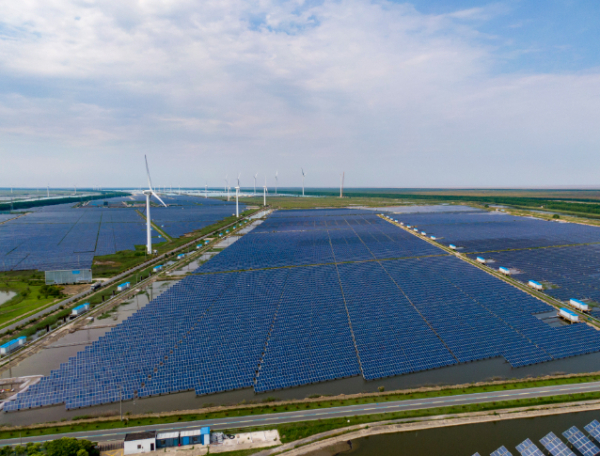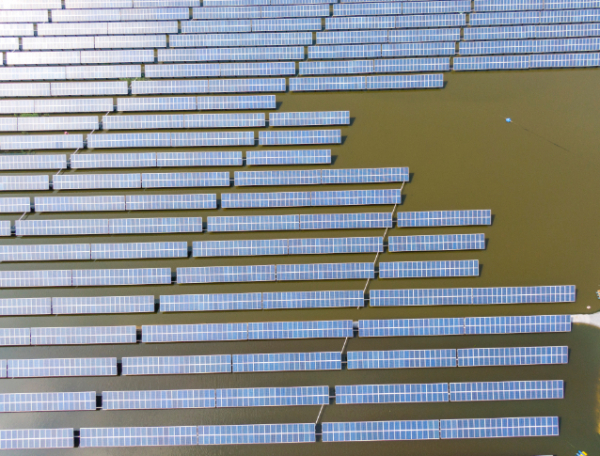Dongtai Coastal Economic Zone flourishes through integrated mudflat development

Dongtai Coastal Economic Zone in Yancheng City of Jiangsu Province has made great strides in the integrated development of aquaculture and conversion of energy from sunlight and wind.
A visit to the zone on June 12 was be greeted by giant wind turbines, thousands of solar panels installed on the mudflat and farms for breeding, rearing, and harvesting of products like mullet, shrimp, crab and other species.
This unique combination of fish farming with solar and wind power generation has maximized the utilization of the area’s resources. Shen Dandan, a staff member of the economic zone, said this 3-in-1 development model is the first of its kind in China, bringing together three industries into the same space to achieve efficient use of the vast mudflat area.
A single wind turbine can generate enough electricity for a family’s daily use, and each individual component on the solar panel can generate 0.27 kWh per hour. The entire zone can generate about 1.72 million kWh per hour.
Yang Min, station manager of CECEP Dongtai Solar Power Generation Co Ltd, one of the project operators, said this development model has various advantages. The clean environment and strong sunshine at the seashore provide a superior environment for PV power generation while reducing emission of harmful gases. Additionally, the large coastal mudflat area can be fully utilized for the aquaculture industry, supporting locals to start their own businesses and increase income, thereby achieving good economic, ecological and social benefits simultaneously.

The zone has piloted a path of sustainable development in recent years. The average annual power generation has reached nearly 100 million kWh since the operation, equivalent to reducing the annual consumption of 40,000 tonnes of standard coal. This helps reduces carbon dioxide and sulfur dioxide emissions by 99,700 tonnes and 3,000 tonnes, respectively.
As China has set ambitious goals of achieving a carbon peak by 2030 and carbon neutrality by 2060, the zone has doubled efforts to pursue eco-friendly development. The new energy and health industries have contributed to 95% of the zone’s total industry output, and both sectors have also maintained a high growth rate.
Contact us at english@jschina.com.cn